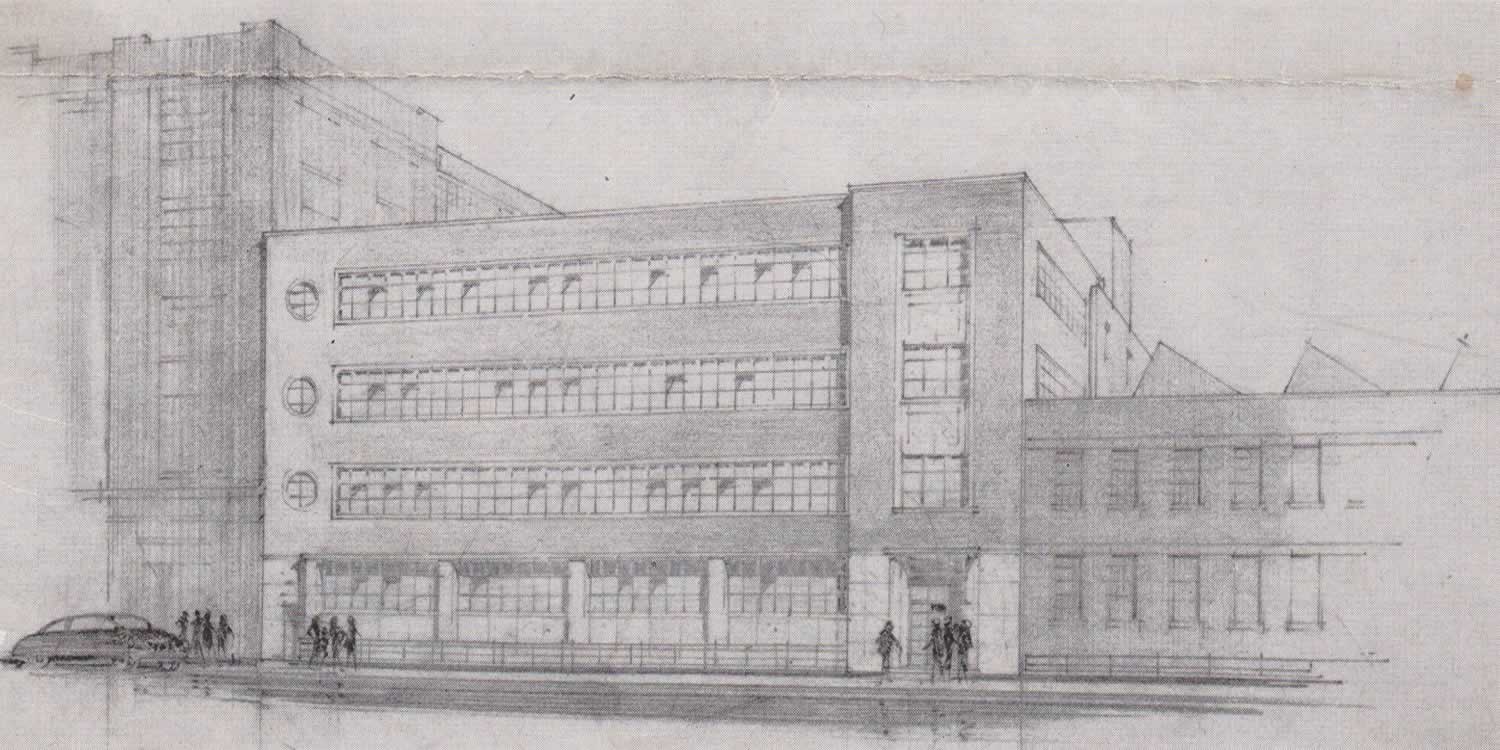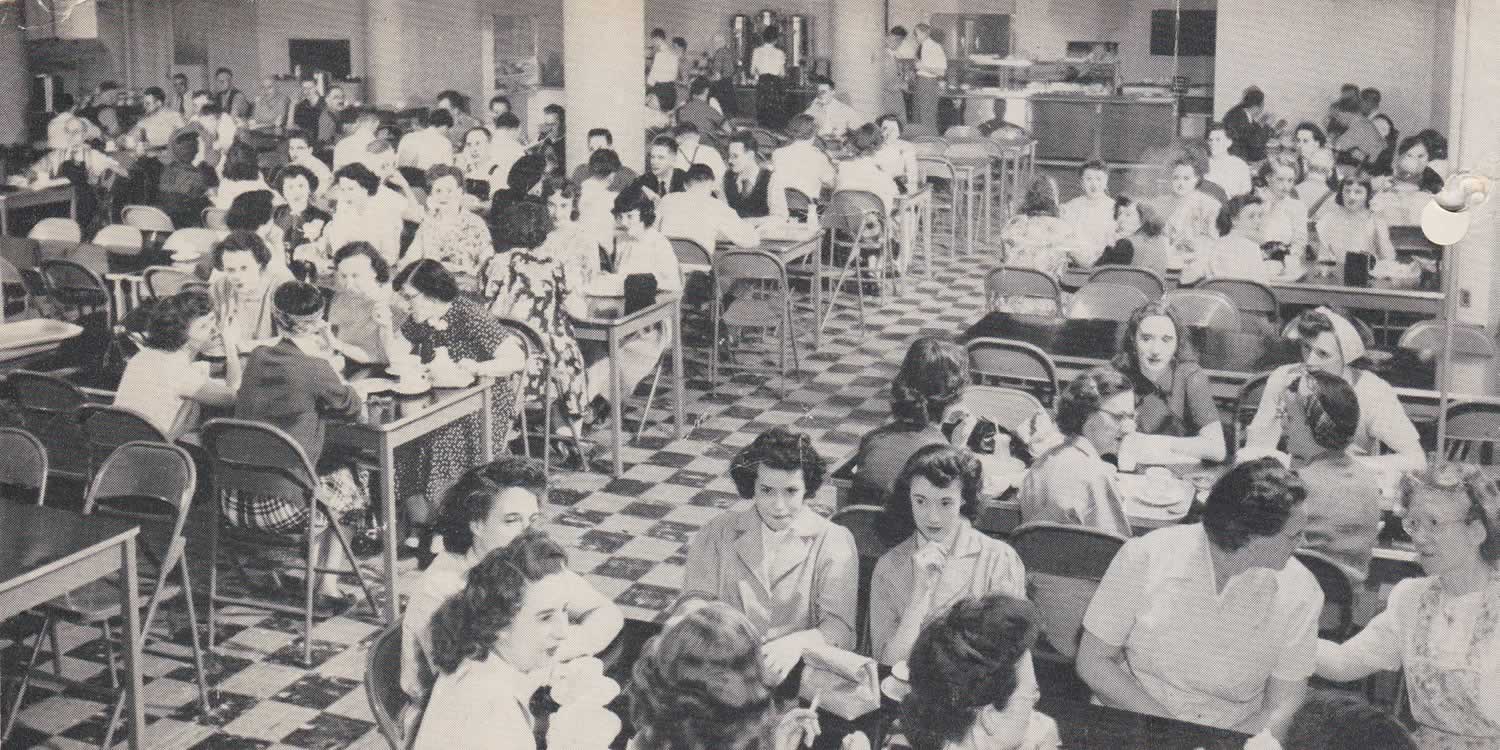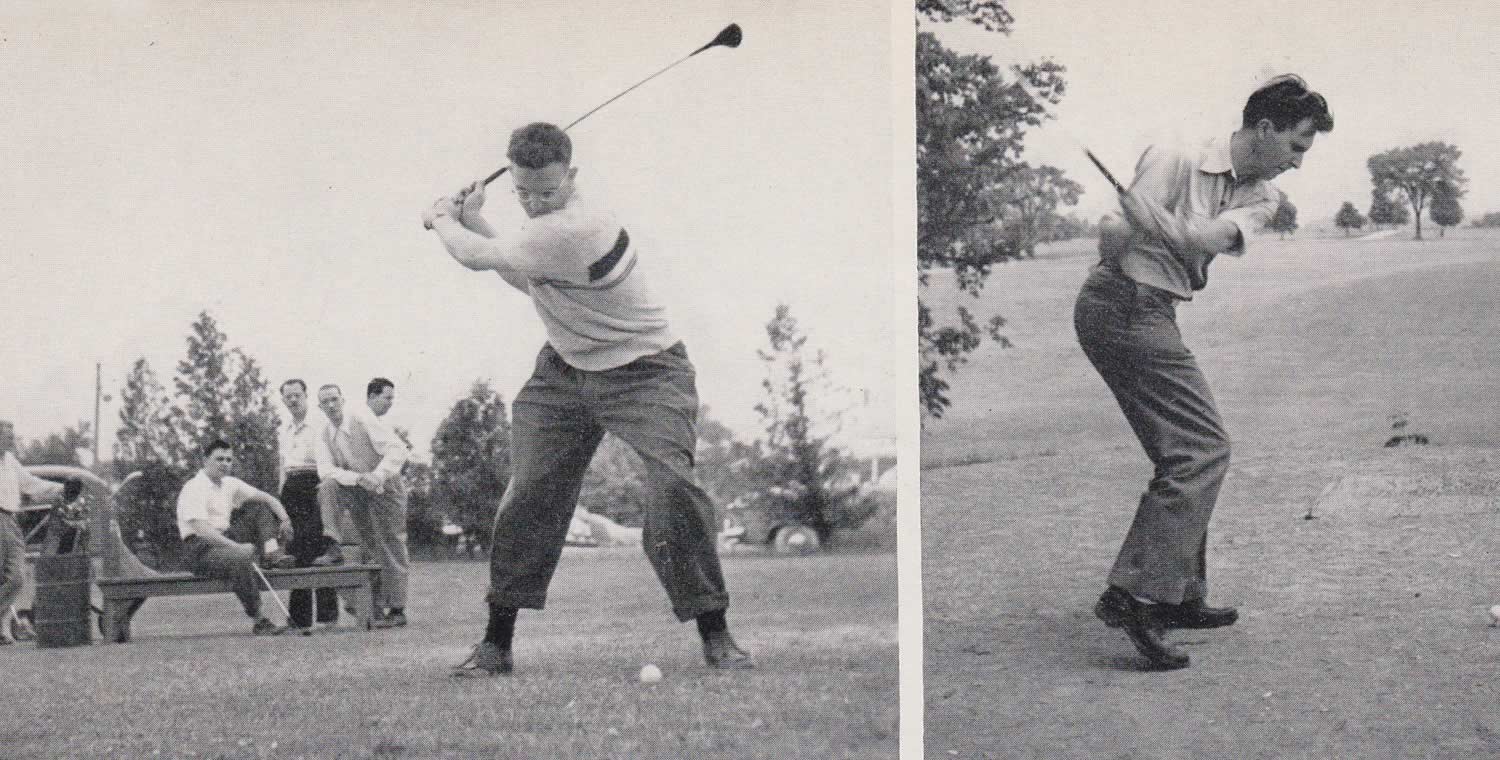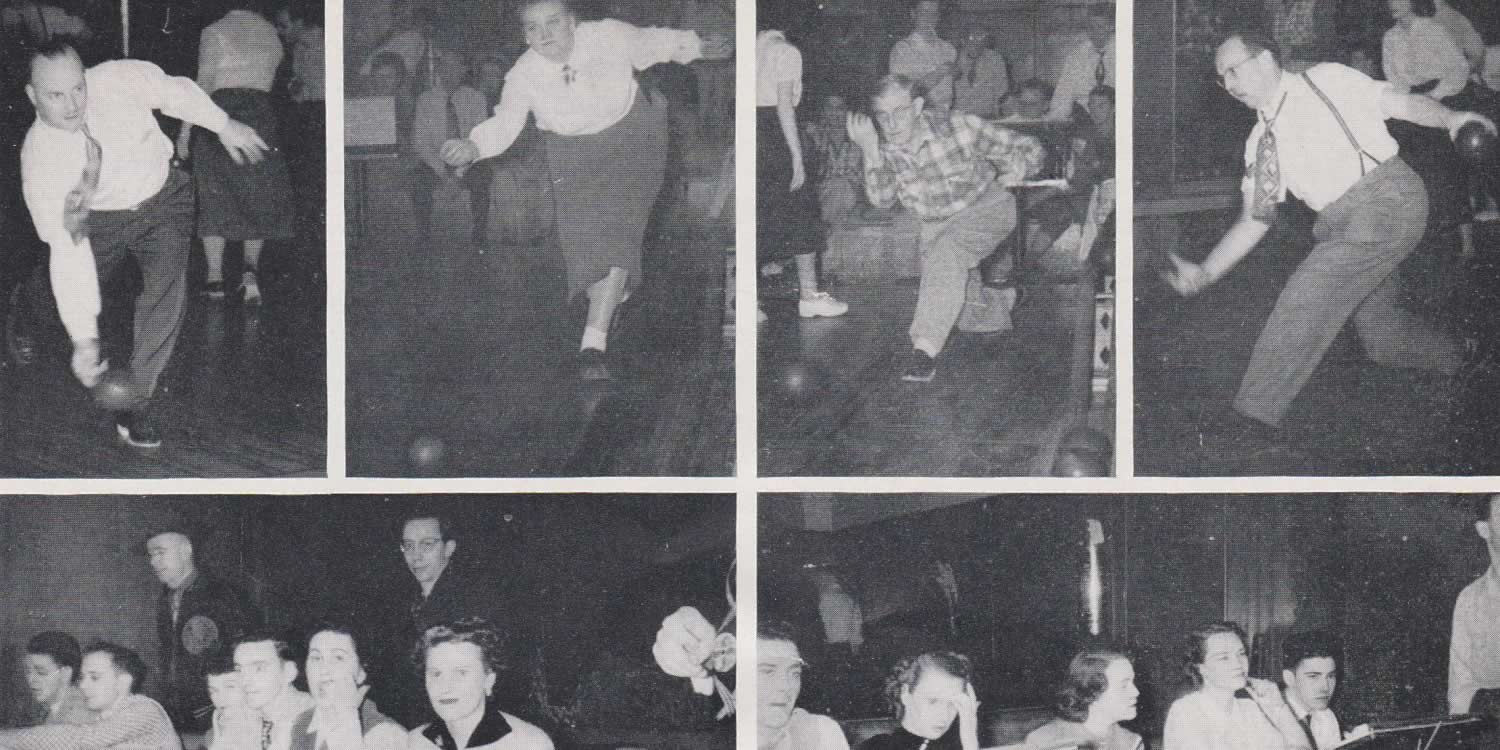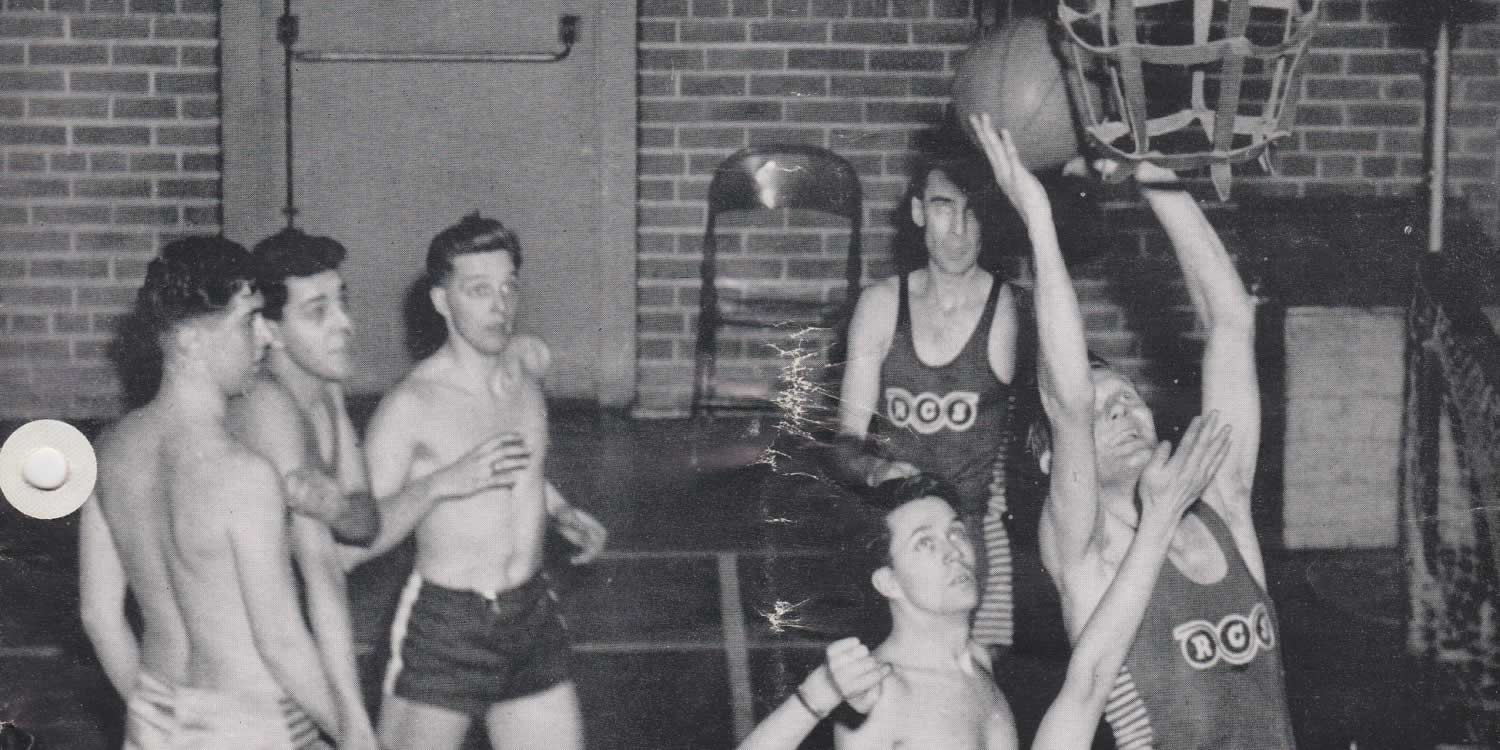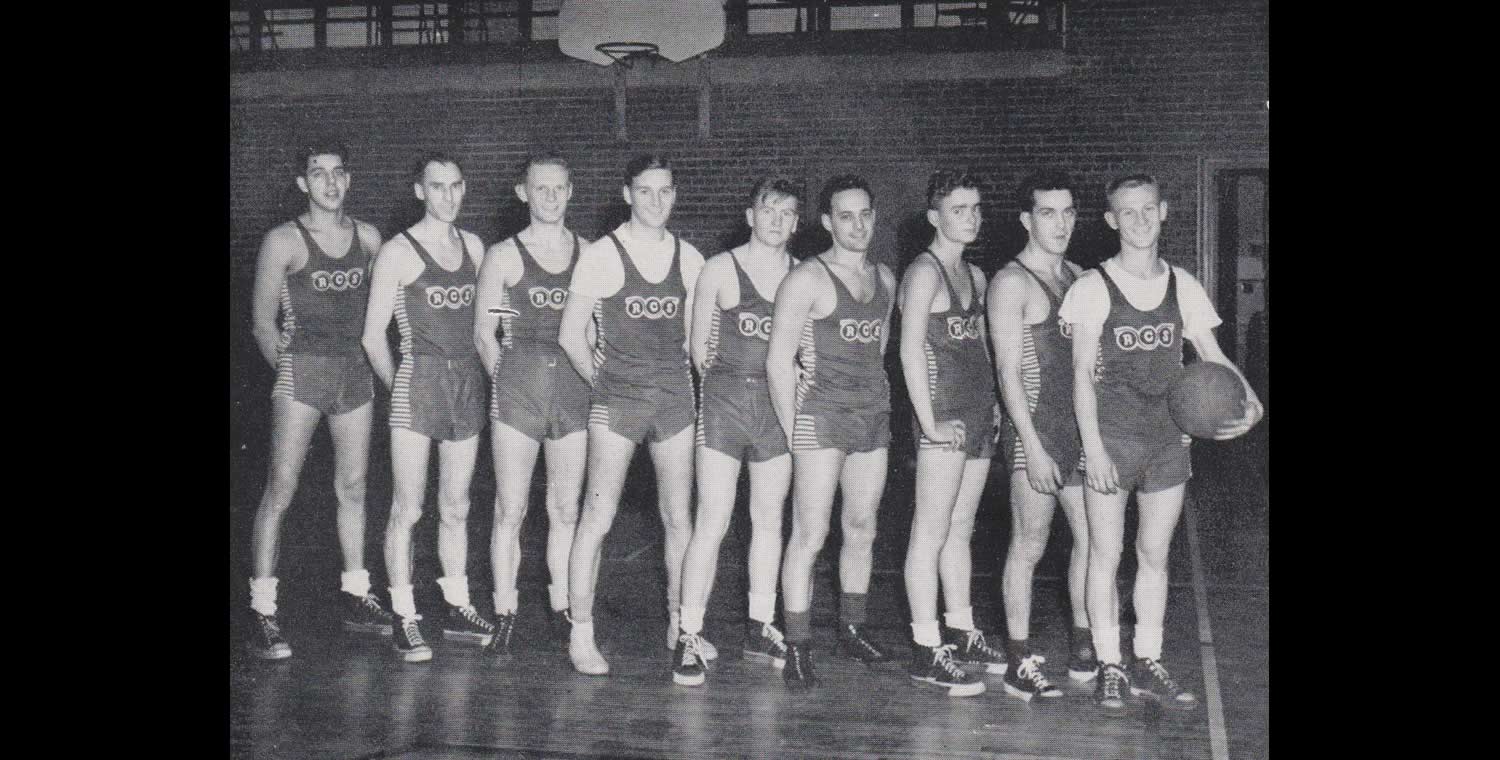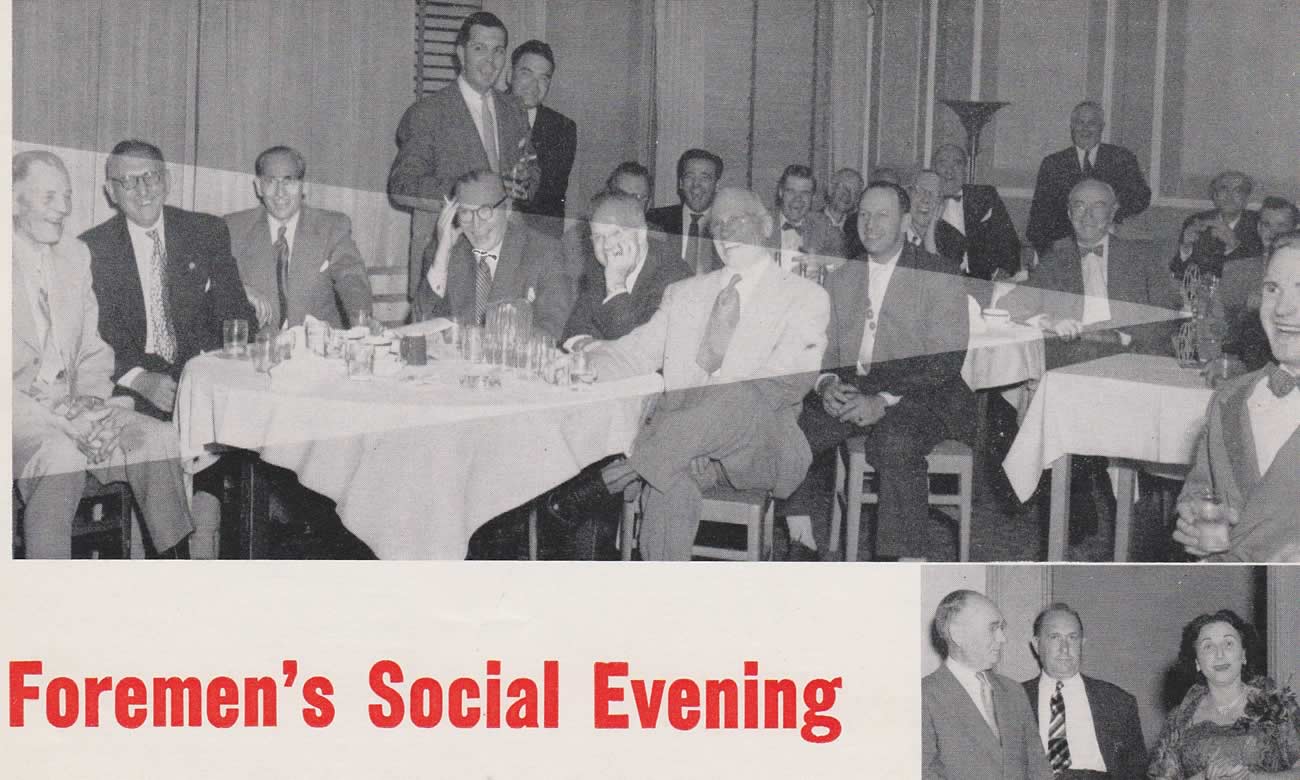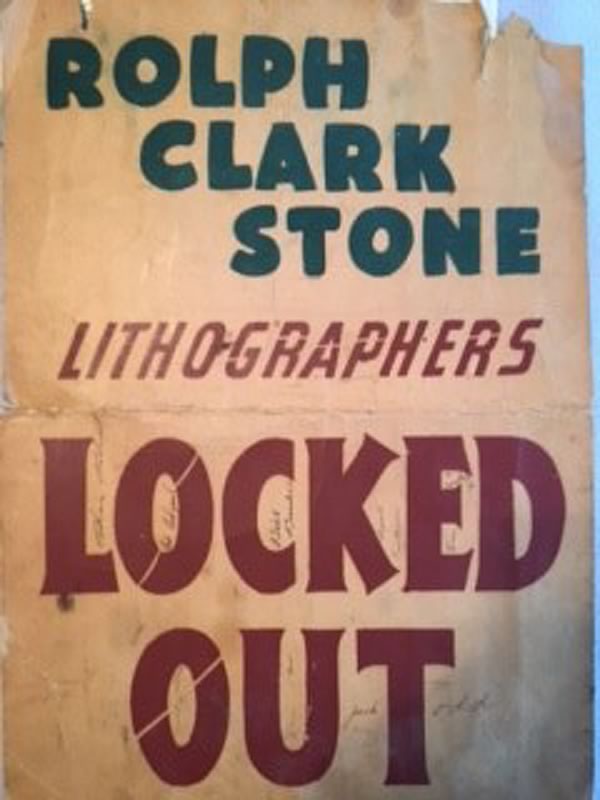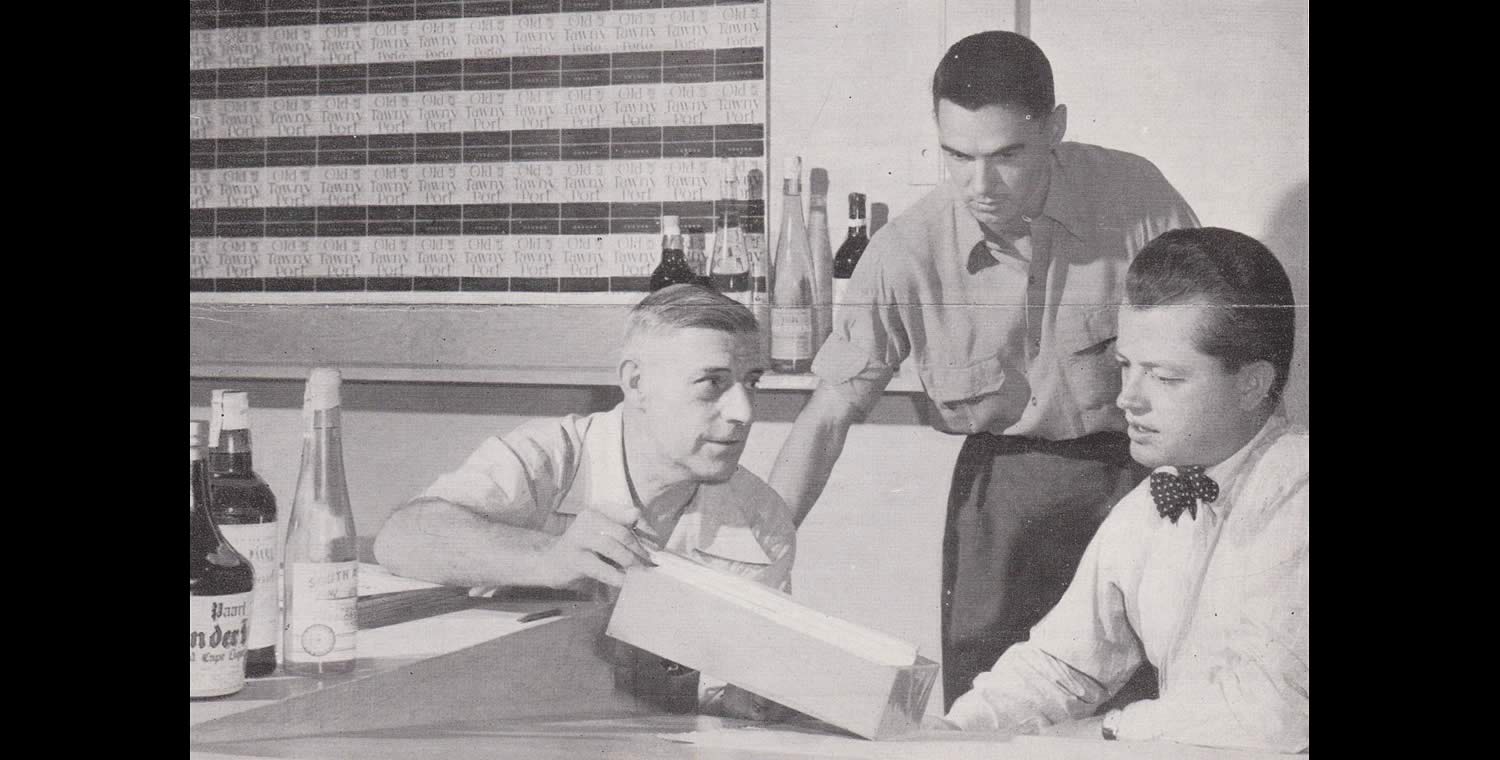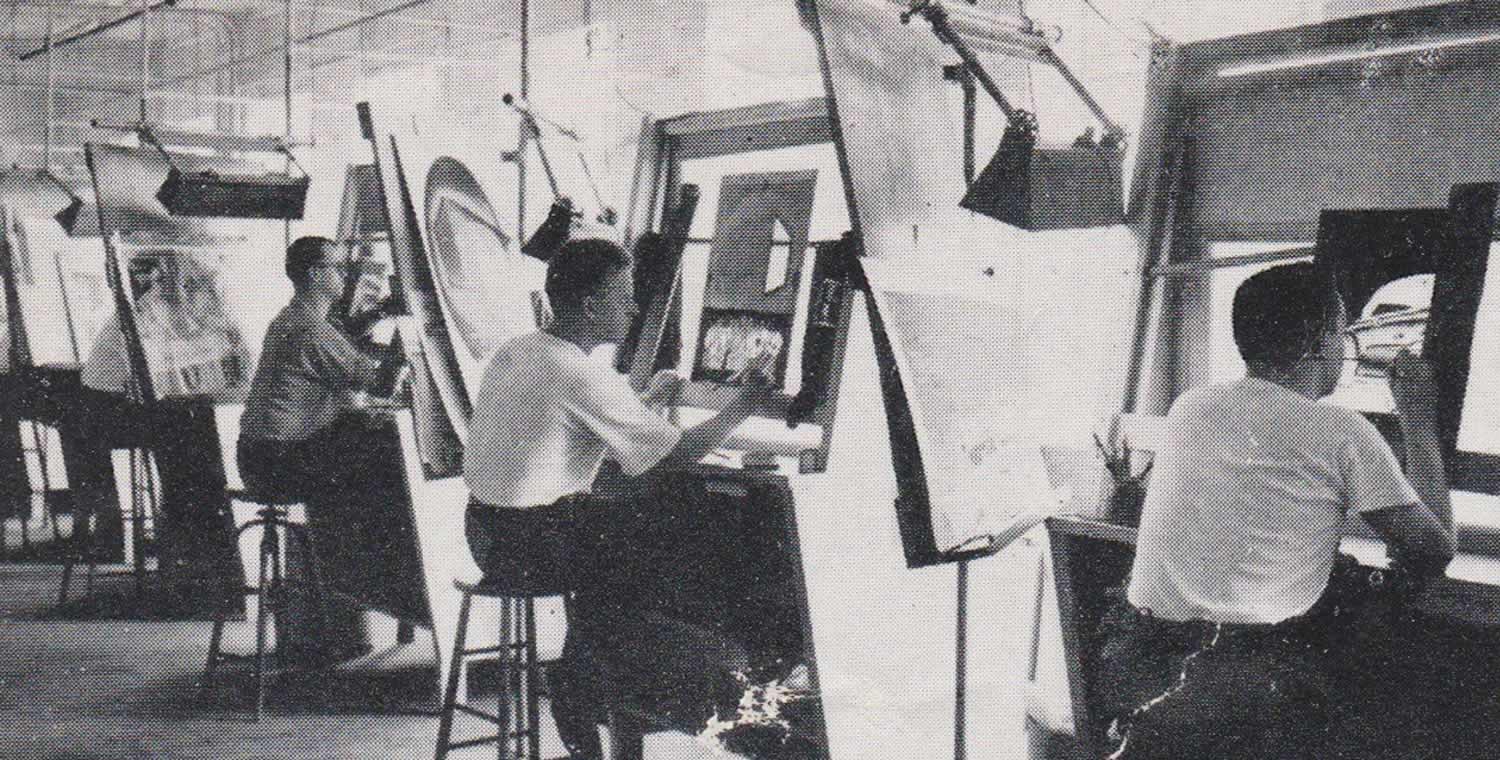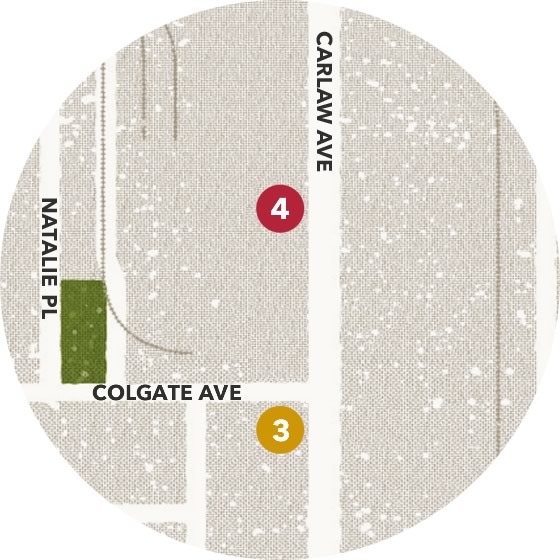This building elegantly combines form and function.
Rolph-Clark-Stone is an excellent example
of Edwardian industrial architecture.


Rolph-Clark-Stone is an excellent example of Edwardian industrial architecture.
Rolph-Clark-Stone
Location:
201 Carlaw Ave.
Year:
1913, adapted for residential use in 2010
Architect:
Unknown
Made:
Lithographic prints, product labels, graphic design
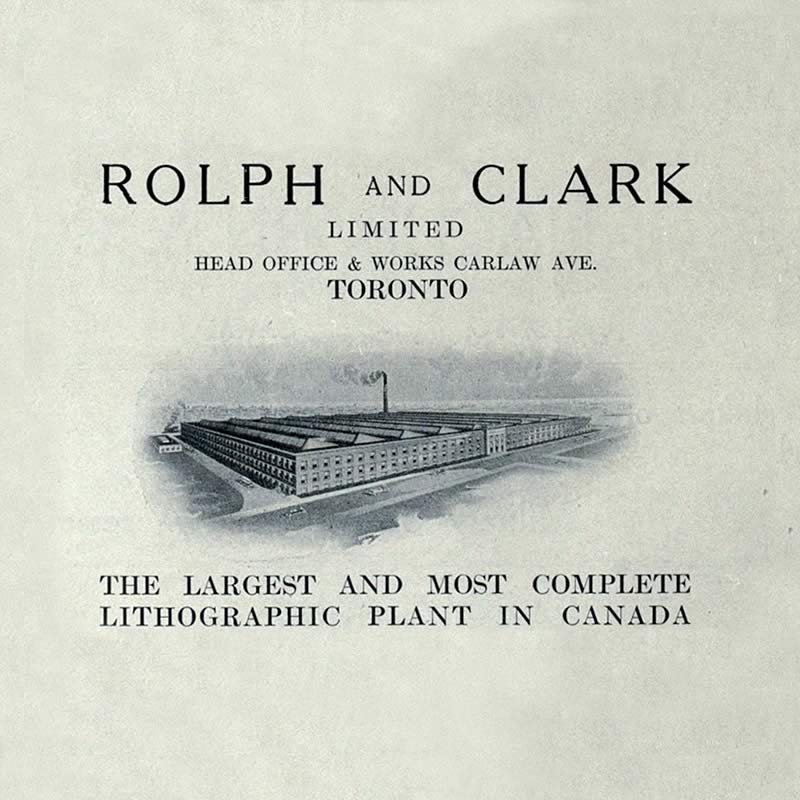
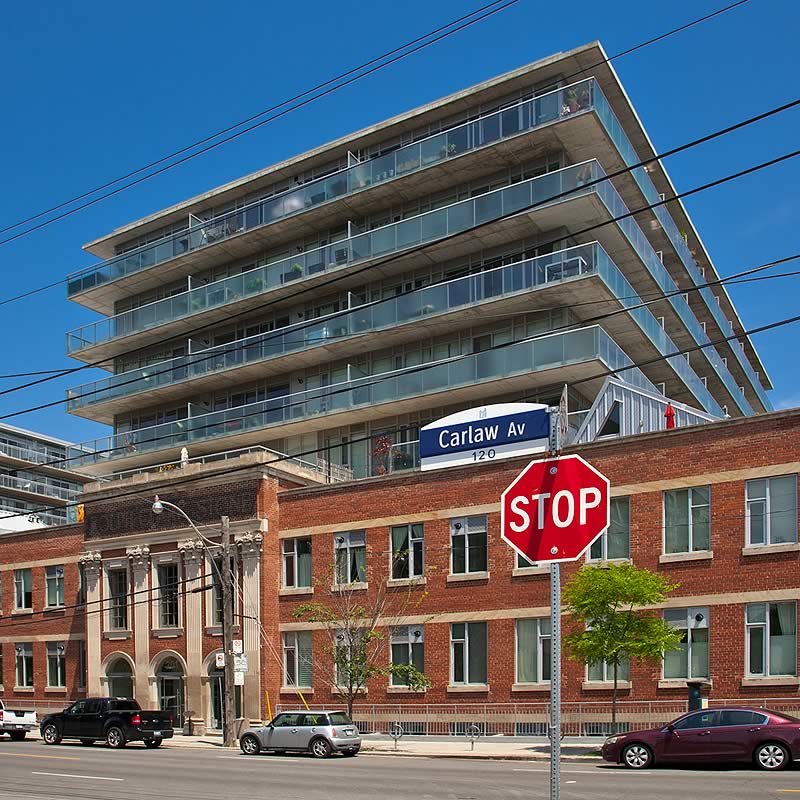
Left: Advertisement for the
Rolph and Clark Ltd. Company, 1916.
Placed in "Two years of war: as viewed
from Ottawa," published by The Civilian
Right: Rolph-Clark-Stone Building, converted
into the Printing Factory Lofts, June 2018.
Image by Herman Custodio
The triangular sawtooth roof gave artists working deep within the two-acre factory a source of natural light.
The main entrance was decorated with ornate pilasters, architectural flourishes that give the appearance of a supporting column and lend the otherwise practical building a touch of style.

Check
it out ...
Ghost Sign
Look at the weathered letters above the main entrance. Faded signs like these are called ghost signs, and you will see several on this tour.

Ghost Sign above the entrance to the
Printing Factory Lofts at 201 Carlaw, 2018.
Image by Herman Custodio
When the Rolph-Clark-Stone factory opened in 1913, the company employed nearly 400 people.
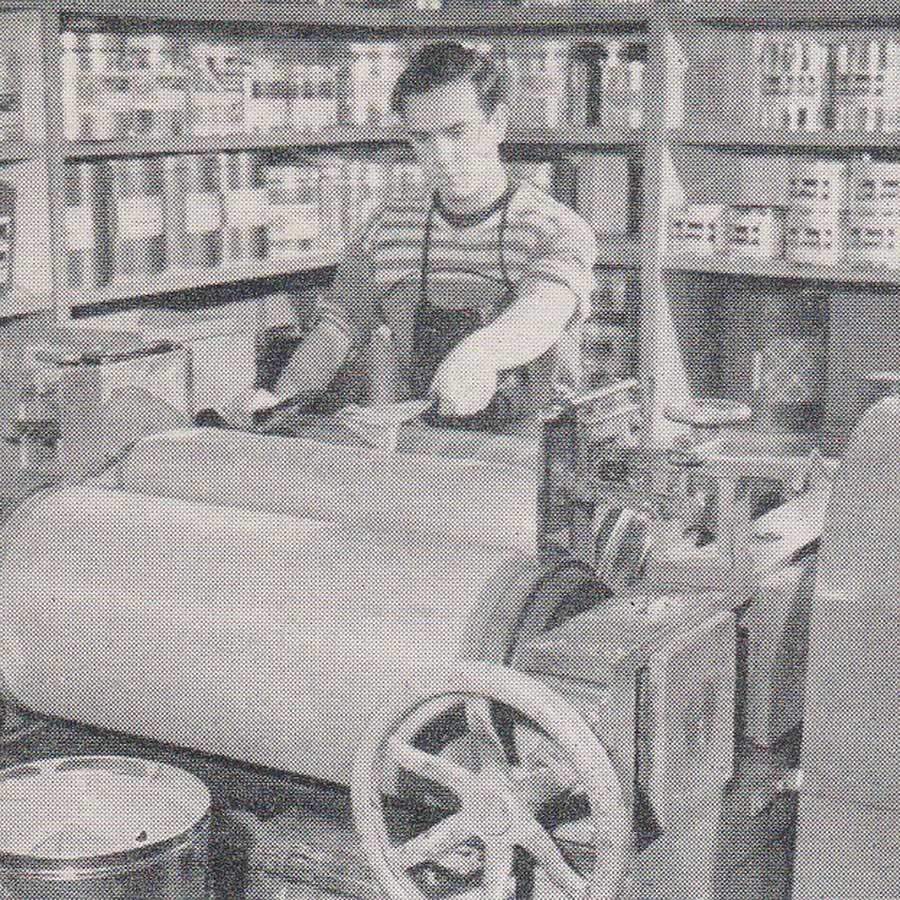
Employee blending inks for the lithography
presses on an ink mill, 1952.
Combination Sheet
Rolph-Clark-Stone employees made high-quality printed materials such as maps, cheques, and certificates.
Employee blending inks for the lithography
presses on an ink mill, 1952.
Combination Sheet
Cutters in the lithography finishing department,
Rolph-Clark-Stone factory, 1952.
Combination Sheet
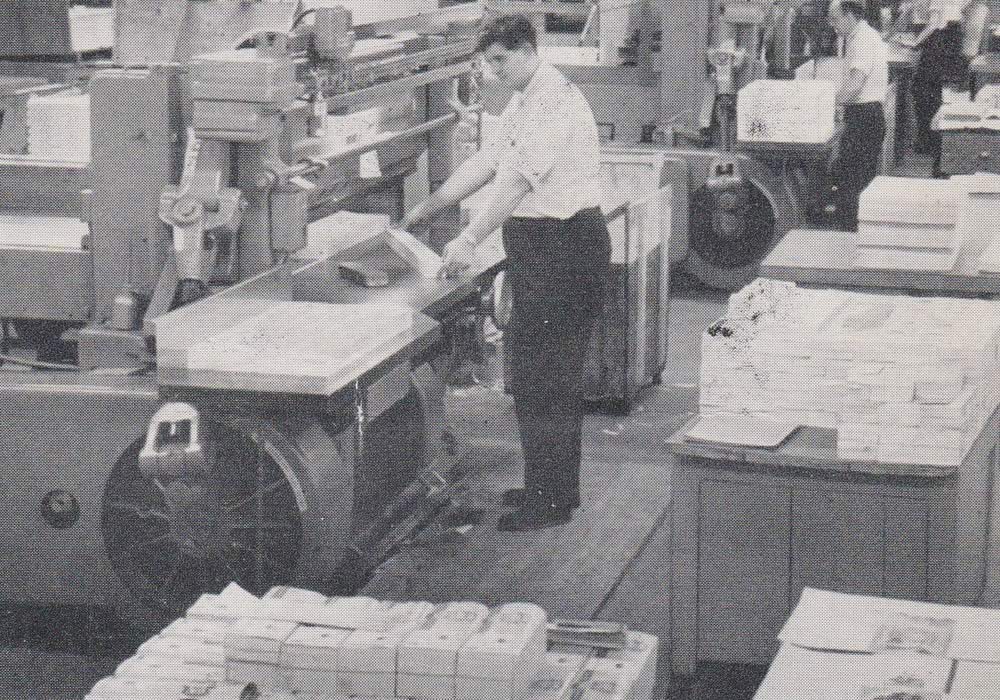
In the early 1950s, Rolph-Clark-Stone built an extension to the north of its 1913 factory at 233 Carlaw.
The new building was outfitted with modern machinery, a state-of-the-art cafeteria, and a medical centre staffed by a doctor and a nurse. These changes and improvements were captured in the Rolph-Clark-Stone monthly newsletter, Combination Sheet.
Social clubs and sports teams were also a way for businesses to build loyalty.
Like today’s tech companies, they believed blending work and play increased productivity.
Rolph-Clark-Stone’s foremen enjoy a social evening, 1952.
Combination Sheet
This paternalistic management
style did not always work.
Strikes and labour disputes happened regularly.
In July 1949, close to 1,000 members of the Amalgamated Lithographic Workers of America union were involved in a labour dispute with their employers in Quebec and Ontario, including Rolph-Clark-Stone.
The union wanted a 10-cent increase to their hourly wage (a raise of about $1.10 in 2019), a reduction in working hours from 40 to 37.5 a week, and a company pension and benefits plan.
Living Memory
“In 1949, one of the [workers]
came up and said: ‘Lou, you've got
to pack up your tools. We’re being locked
out’ ... that happened in June 1949 and it
ended in December 1949. Six months. ...
We had a picket team of eight people
and I was one of them at the front
of Rolph-Clark-Stone.”
Lou Luciani
who worked at Rolph-Clark-Stone
from 1947 to 1970

Locked out Rolph-Clark-Stone workers,
including Lou Luciani (back row second from
left,) on the picket line on Carlaw, 1949.
Courtesy of Linda Luciani
Only male employees were eligible for the insurance, likely because women, even if they worked, were considered dependent on the head of the household.
Locked out Rolph-Clark-Stone workers,
including Lou Luciani (back row second from left,) on the picket line on Carlaw, 1949.
Courtesy of Linda Luciani
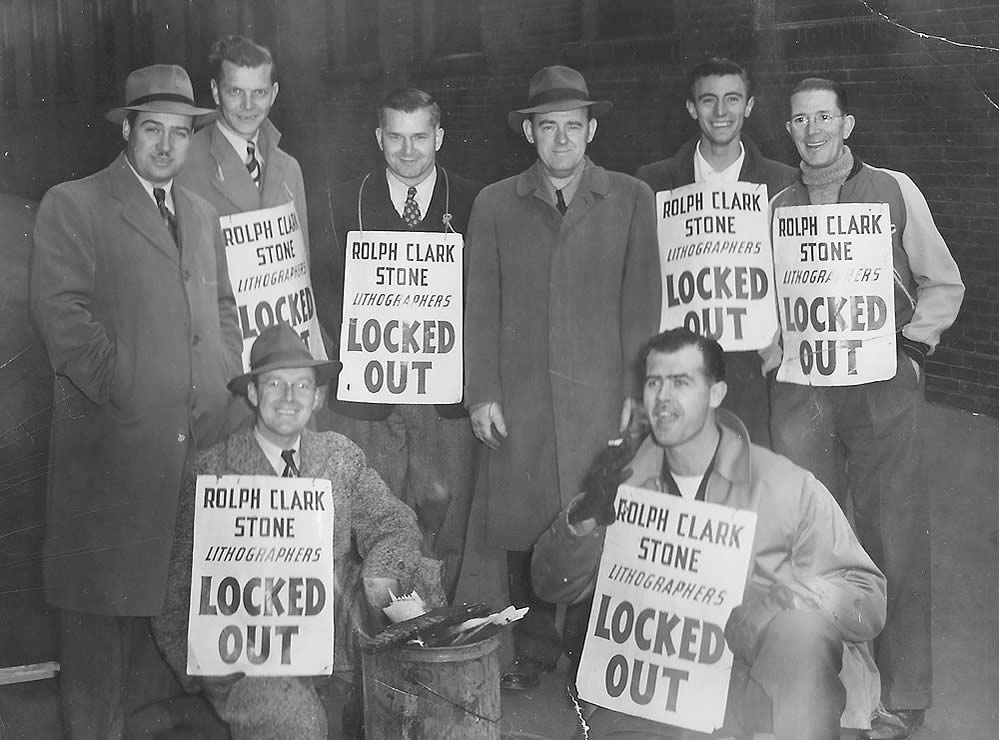
In the 1950s, under the direction of artist Clair Stewart, Rolph-Clark-Stone became a graphic design powerhouse.
It produced work for Canada Packers, Canada Steamship Lines, the Canadian National Exhibition, the Ontario government, Salada tea, and the Toronto Star newspaper.
While at Rolph-Clark-Stone, Clair Stewart also consulted with the Toronto Transit Commission on the graphic design of Canada’s first subway, the Yonge line, which opened in 1954.
Starting in the 1960s, due to economic decline, many of the buildings on Carlaw took on new uses.
The 1950s addition to the Rolph-Clark-Stone factory became a garment factory owned by the fashion giant Dylex, which operated clothing retailers Harry Rosen, Tip Top Tailors, Club Monaco, BiWay, and many others.
In 2010, both the original Rolph-Clark-Stone building and the extension were converted for residential use. They are now known as the Printing and the Garment Factory Lofts, a nod to the previous tenants.

Check
it out ...
A heritage parking lot?
Once owned by Rolph-Clark-Stone, the vacant lot at the southwest corner of Colgate and Carlaw Avenues has been used for storing vehicles for more than 100 years. It has never been developed.
Read the plaque
Safely cross the street using the pedestrian crossing north on Carlaw to read the plaque, or enjoy it below.
The plaque is located in front of the building.
ROLPH-CLARK-STONE LIMITED BUILDING
1913
For more than five decades, this building was the headquarters and main factory of one of the largest graphic arts companies in Canada. Founded in 1849 as Ellis & Co, and purchased by lithographer Joseph Thomas Rolph in 1867, the company was renamed Rolph-Clark-Stone in 1917 after a series of mergers. When the factory opened in 1913, in the heart of a rapidly growing industrial area, the company employed approximately 400 people. They produced high-quality printed materials such maps, cheques, and certificates. The building's sawtooth roof shielded sensitive printing machinery from direct sunlight. A railway line at the rear simplified shipping and receiving. A notable example of industrial architecture from just before the the First World War, the Rolph-Clark-Stone building was converted for residential use in 2010.

Ready to hit the next stop?
Head north on Carlaw Ave., staying on the west side, until you come across the Reliable Toy Co. plaque. This is the next stop.
Full steam
ahead!







